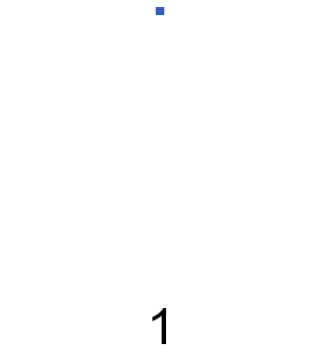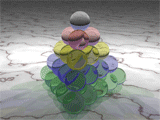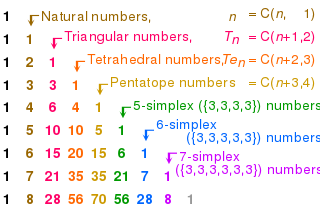| s | t | Sequence | OEIS number |
|---|
| 4 | 3 | 1, 36, 1225, 41616, 1413721, 48024900, 1631432881, 55420693056, 1882672131025, 63955431761796, 2172602007770041, 73804512832419600, 2507180834294496361, 85170343853180456676, 2893284510173841030625, 98286503002057414584576, 3338847817559778254844961, ... | A001110 |
| 5 | 3 | 1, 210, 40755, 7906276, 1533776805, 297544793910, 57722156241751, 11197800766105800, 2172315626468283465, … | A014979 |
| 5 | 4 | 1, 9801, 94109401, 903638458801, 8676736387298001, 83314021887196947001, 799981229484128697805801, ... | A036353 |
| 6 | 3 | All hexagonal numbers are also triangular. | A000384 |
| 6 | 4 | 1, 1225, 1413721, 1631432881, 1882672131025, 2172602007770041, 2507180834294496361, 2893284510173841030625, 3338847817559778254844961, 3853027488179473932250054441, ... | A046177 |
| 6 | 5 | 1, 40755, 1533776805, … | A046180 |
| 7 | 3 | 1, 55, 121771, 5720653, 12625478965, 593128762435, 1309034909945503, 61496776341083161, 135723357520344181225, 6376108764003055554511, 14072069153115290487843091, … | A046194 |
| 7 | 4 | 1, 81, 5929, 2307361, 168662169, 12328771225, 4797839017609, 350709705290025, 25635978392186449, 9976444135331412025, … | A036354 |
| 7 | 5 | 1, 4347, 16701685, 64167869935, … | A048900 |
| 7 | 6 | 1, 121771, 12625478965, … | A048903 |
| 8 | 3 | 1, 21, 11781, 203841, … | A046183 |
| 8 | 4 | 1, 225, 43681, 8473921, 1643897025, 318907548961, 61866420601441, 12001766689130625, 2328280871270739841, 451674487259834398561, 87622522247536602581025, 16998317641534841066320321, … | A036428 |
| 8 | 5 | 1, 176, 1575425, 234631320, … | A046189 |
| 8 | 6 | 1, 11781, 113123361, … | A046192 |
| 8 | 7 | 1, 297045, 69010153345, … | A048906 |
| 9 | 3 | 1, 325, 82621, 20985481, … | A048909 |
| 9 | 4 | 1, 9, 1089, 8281, 978121, 7436529, 878351769, 6677994961, 788758910641, 5996832038649, 708304623404049, 5385148492712041, 636056763057925561, ... | A036411 |
| 9 | 5 | 1, 651, 180868051, … | A048915 |
| 9 | 6 | 1, 325, 5330229625, … | A048918 |
| 9 | 7 | 1, 26884, 542041975, … | A048921 |
| 9 | 8 | 1, 631125, 286703855361, … | A048924 |
|
































